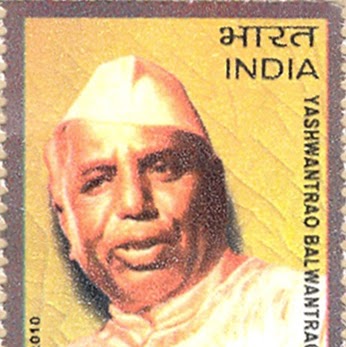Balkrishna S Jadhav
age ~75
from Plymouth, MN
- Also known as:
-
- Bal S Jadhav
- Balkrishn S Jadhav
- Baal Jadhav
- A Jadhav
- Phone and address:
- 1411 7Th St SE, Minneapolis, MN 55414
Balkrishna Jadhav Phones & Addresses
- 1411 7Th St SE, Minneapolis, MN 55414
- Plymouth, MN
- Newport Beach, CA
- Medfield, MA
- Eden Prairie, MN
- Hopkins, MN
- Holland, PA
Us Patents
-
Bioresorbable Stent
view source -
US Patent:6991647, Jan 31, 2006
-
Filed:Jan 31, 2001
-
Appl. No.:09/774516
-
Inventors:Balkrishna S. Jadhav - Plymouth MN, US
-
Assignee:AMS Research Corporation - Minnetonka MN
-
International Classification:A61F 2/06
A61F 2/00 -
US Classification:623 12, 623 122, 424423
-
Abstract:A bio-compatible and bioresorbable stent is disclosed that is intended to restore or maintain patency following surgical procedures, traumatic injury or stricture formation. The stent is composed of a blend of at least two polymers that is either extruded as a monofilament then woven into a braid-like embodiment, or injection molded or extruded as a tube with fenestrations in the wall. Methods for manufacturing the stent are also disclosed.
-
Short-Term Bioresorbable Stents
view source -
US Patent:20020188342, Dec 12, 2002
-
Filed:Aug 2, 2001
-
Appl. No.:09/920871
-
Inventors:Robert Rykhus - Edina MN, US
Balkrishna Jadhav - Minnetonka MN, US
Robert Grant - New Hope MN, US -
International Classification:A61F002/06
-
US Classification:623/001200, 623/001220, 264/103000, 219/121710
-
Abstract:Bioresorbable, self-expanding stents intended to relieve stenoses occurring in organs, vessels, or other luminal structures within the human body are provided. The bioresorbable, self-expanding stents are composed of bioresorbable, biocompatible polymers. The bioresorbable stents provide openings that allow for tissue in-growth through the stent thereby fixing the stent in place and allowing the stent to be controllably degraded and excreted by the body.
-
Bioresorbable Medical Devices
view source -
US Patent:20030069629, Apr 10, 2003
-
Filed:Apr 23, 2002
-
Appl. No.:10/128867
-
Inventors:Balkrishna Jadhav - Plymouth MN, US
Robert Grant - New Hope MN, US -
International Classification:A61F002/06
-
US Classification:623/001150
-
Abstract:A bio-compatible and bioresorbable medical device is disclosed. Specifically a polymeric stent is disclosed intended to restore or maintain patency following surgical procedures, traumatic injury or stricture formation. The polymeric stent is composed of one or more polymers that is either extruded as a monofilament then woven into a braid-like embodiment, or injection molded or extruded as a tube with fenestrations in the wall. Related methods for controlling the medical devices' in vivo functional life by controlling polymer monomer content and other polymer structural qualities are also provided.
-
Bioabsorbable Mesh For Surgical Implants
view source -
US Patent:20130012768, Jan 10, 2013
-
Filed:Feb 16, 2011
-
Appl. No.:13/579491
-
Inventors:Edouard A. Koullick - Golden Valley MN, US
Balkrishna S. Jadhav - Plymouth MN, US
Robert C. Grant - New Hope MN, US -
International Classification:A61F 2/00
A61B 17/03 -
US Classification:600 37, 606151
-
Abstract:Described are methods, devices, and systems related to pelvic implants, including implants that include absorbable and non-absorbable materials.
-
Bioresorbable Stent
view source -
US Patent:6368346, Apr 9, 2002
-
Filed:Jun 3, 1999
-
Appl. No.:09/324743
-
Inventors:Balkrishna S. Jadhav - Plymouth MN
-
Assignee:American Medical Systems, Inc. - Minnetonka MN
-
International Classification:A61F 206
-
US Classification:623 122, 2642108
-
Abstract:A bio-compatible and bioresorbable stent is disclosed that is intended to restore or maintain patency following surgical procedures, traumatic injury or stricture formation. The stent is composed of a blend of at least two polymers that is either extruded as a monofilament then woven into a braid-like embodiment, or injection molded or extruded as a tube with fenestrations in the wall. Methods for manufacturing the stent are also disclosed.
-
Bioabsorbable Mesh For Surgical Implants
view source -
US Patent:20180256305, Sep 13, 2018
-
Filed:May 15, 2018
-
Appl. No.:15/980114
-
Inventors:- Maple Grove MN, US
Balkrishna S. Jadhav - Plymouth MN, US
Robert C. Grant - Minneapolis MN, US -
International Classification:A61F 2/00
A61L 31/14
A61L 31/06
A61L 31/04
C08L 67/04 -
Abstract:Described are methods, devices, and systems related to pelvic implants, including implants that include absorbable and non-absorbable materials.
-
Bioabsorbable Mesh For Surgical Implants
view source -
US Patent:20160302903, Oct 20, 2016
-
Filed:Jun 28, 2016
-
Appl. No.:15/195432
-
Inventors:- Eden Prairie MN, US
Balkrishna S. Jadhav - Plymouth MN, US
Robert C. Grant - Minneapolis MN, US -
International Classification:A61F 2/00
A61L 31/04
A61L 31/14 -
Abstract:Described are methods, devices, and systems related to pelvic implants, including implants that include absorbable and non-absorbable materials.
-
Bioabsorbable Mesh For Surgical Implants
view source -
US Patent:20150272715, Oct 1, 2015
-
Filed:Mar 30, 2015
-
Appl. No.:14/673253
-
Inventors:- Minnetonka MN, US
Balkrishna S. Jadhav - Minnetonka MN, US
Robert C. Grant - Minnetonka MN, US -
International Classification:A61F 2/00
-
Abstract:Described are methods, devices, and systems related to pelvic implants, including implants that include absorbable and non-absorbable materials.
Resumes

Balkrishna Jadhav
view source
Balkrishna Jadhav
view sourceYoutube
Googleplus

Balkrishna Jadhav

Balkrishna Jadhav

Balkrishna Jadhav

Balkrishna Jadhav

Balkrishna Jadhav

Balkrishna Jadhav

Balkrishna Jadhav

Balkrishna Jadhav

Balkrishna Jadhav
view source
Balkrishna Jadhav
view source
Balkrishna Jadhav
view source
Balkrishna Jadhav
view source
Balkrishna Jadhav
view source
Balkrishna Jadhav
view source
Balkrishna Jadhav
view source
Balkrishna Jadhav
view sourceGet Report for Balkrishna S Jadhav from Plymouth, MN, age ~75
